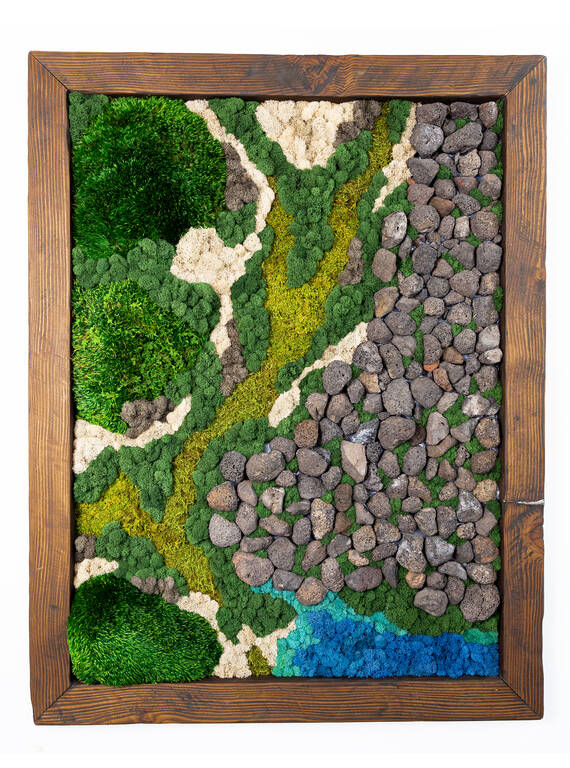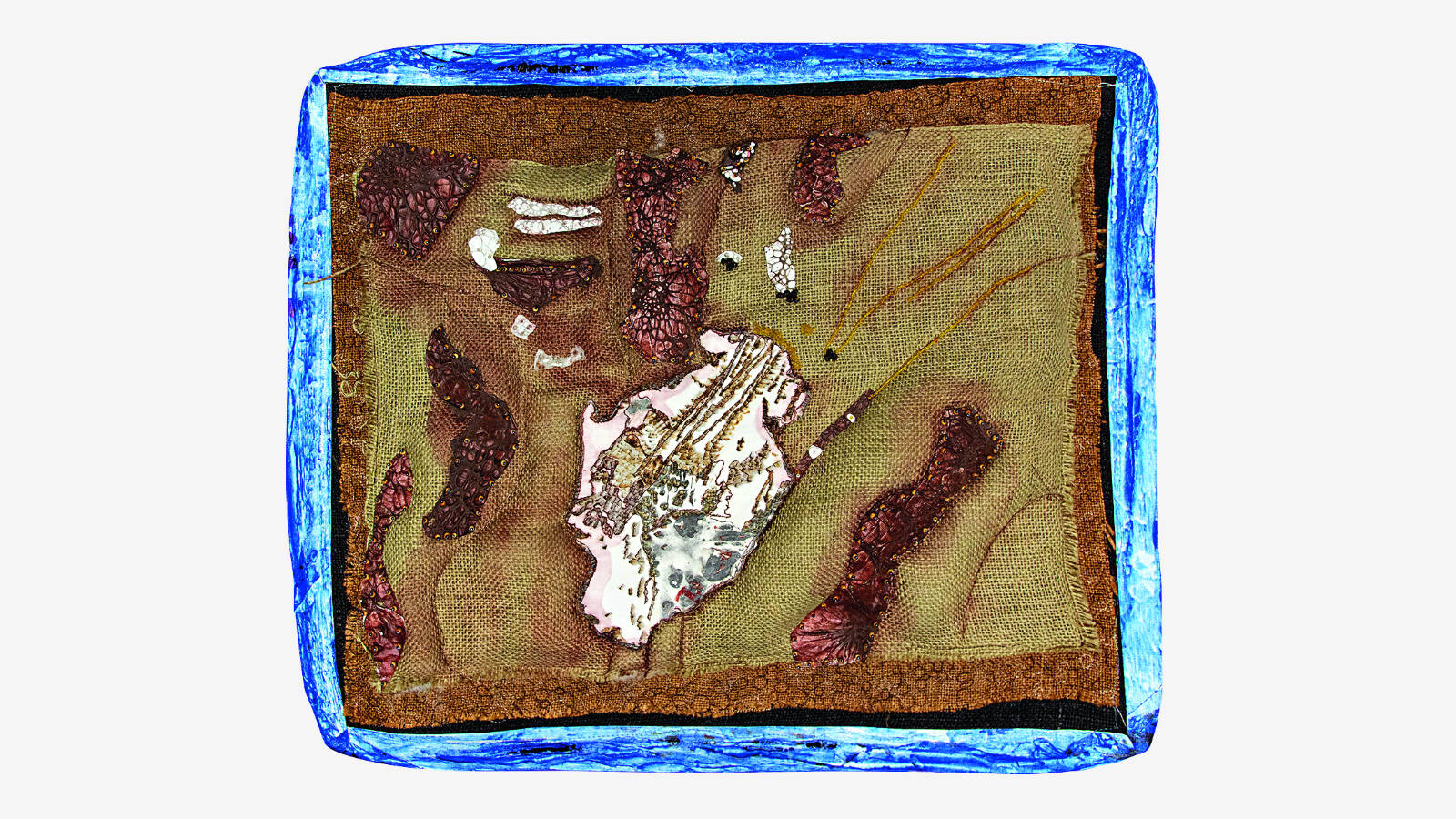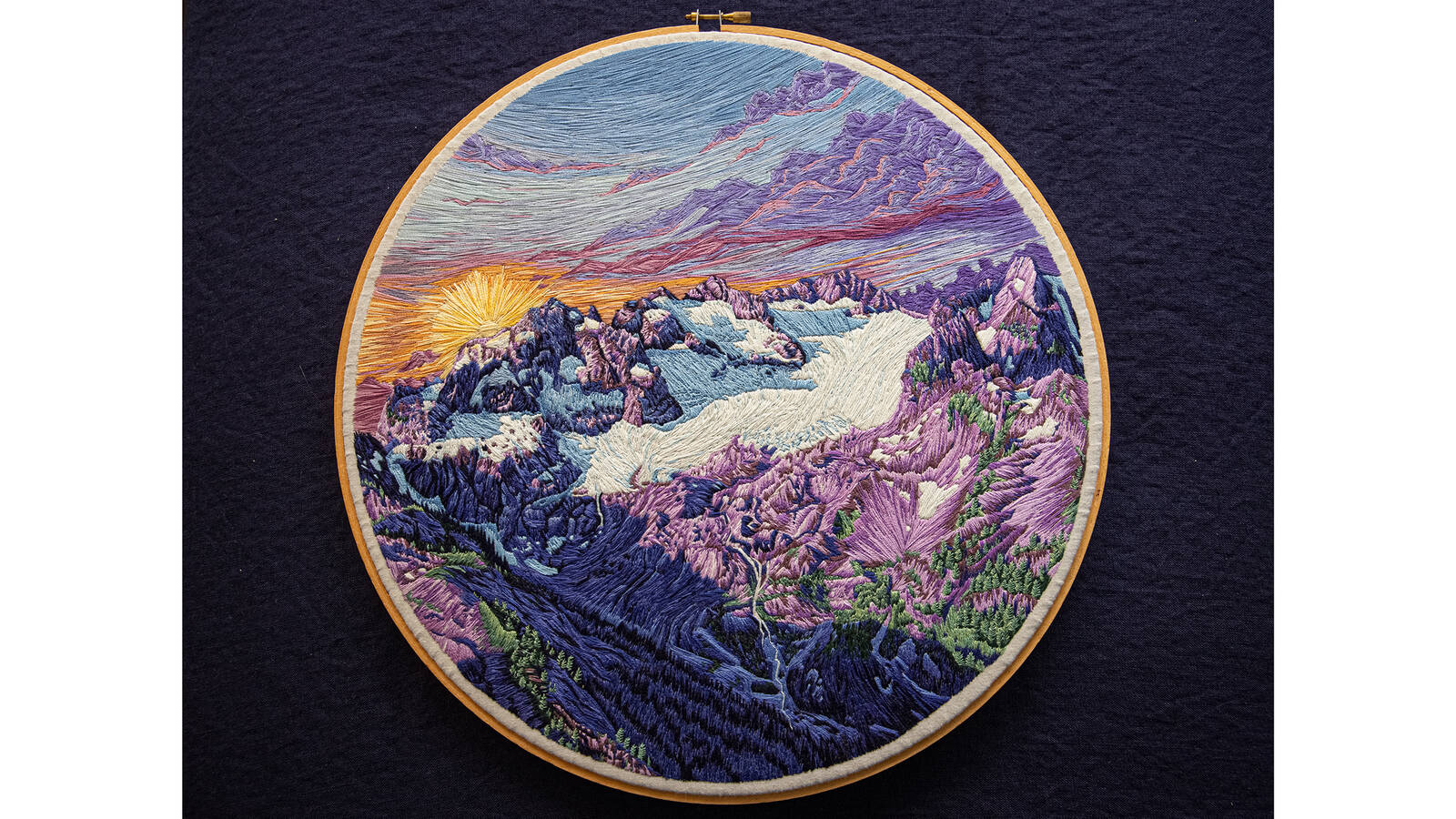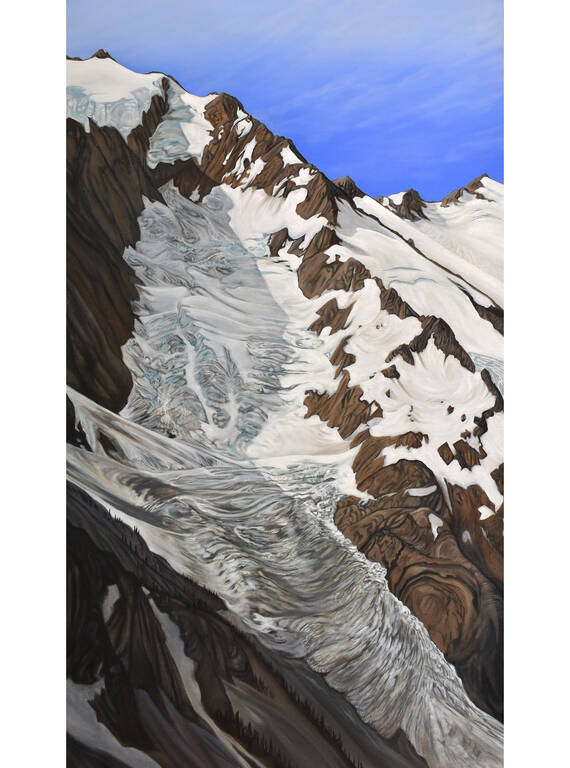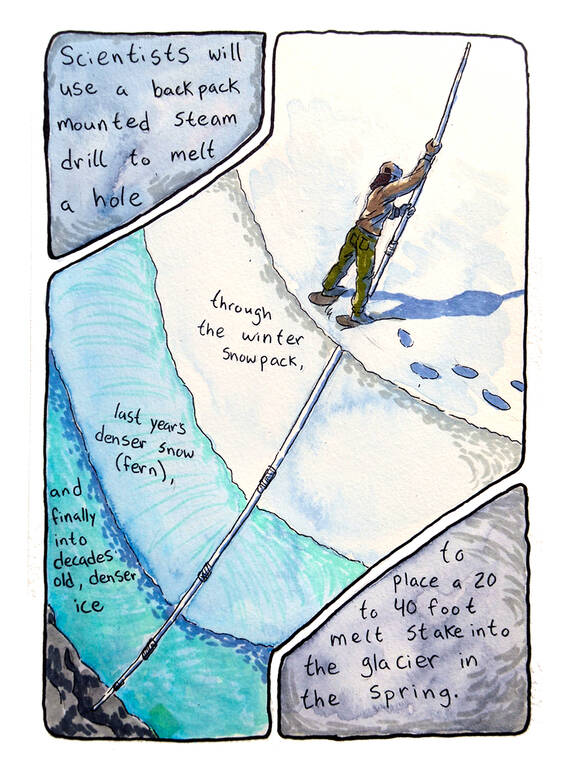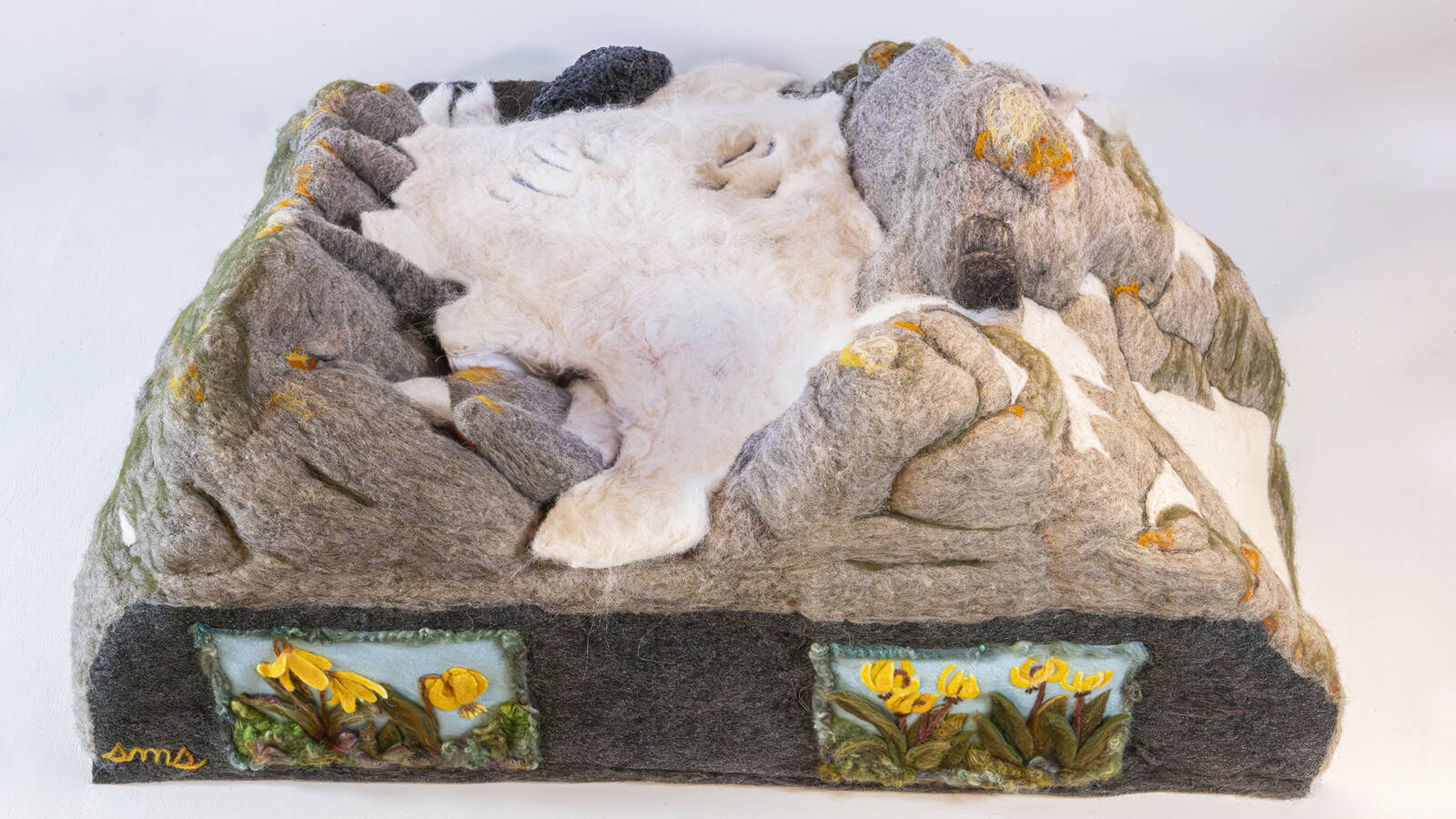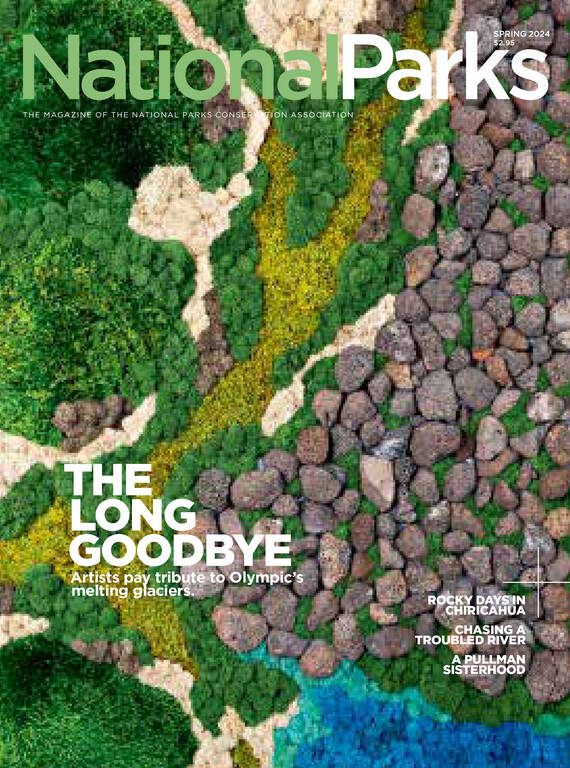Spring 2024
Requiem For Melting Ice
An art project at Olympic memorializes the national park’s shrinking glaciers. Grief is just part of the story.
Disappearing glaciers is a depressing topic — and a hard one to broach. Eliza Goode, a visual information specialist for Olympic National Park, has often noticed how quickly visitors become overwhelmed when learning about how warming temperatures are affecting the park, yet addressing the climate crisis is a critical part of her job. After all, between the early 1980s and 2015, the total surface area of park glaciers had shrunk by 46%. Dozens of glaciers have melted away, and the remaining ones are projected to be virtually gone by 2070. How, Goode has often wondered, can staff inform the public while offering some sense of hope and avoiding the pitfall of despair?
One day, in 2019, in the middle of an ordinary staff meeting, an idea flashed into Goode’s mind. What if she and her colleagues assigned an artist to every glacier in the park and asked each to create a commemorative artwork? “The concept was, these glaciers are going to vanish,” she said. “They’re not going to last probably even my lifetime. They shouldn’t just wink out unnoticed. Something should stand in memorial. Something should be evidence of what they meant and what they did and their place in the ecosystem, a sign and a memory of them being here.”
The glaciers are inherently beautiful, but as they vanish, so much more than that is at stake. Because they act as water storage systems, when they fade, streams flow lower and warmer, which harms aquatic animals and plants. A diminished water supply also affects everything from agriculture to hydropower to drinking water.
Goode’s goal was to create an “artistic elegy” to make climate change, an enormous and abstract issue, more personal and comprehendible. These art pieces, she hoped, would help people process, mourn and reflect, and they would provide an opportunity for viewers to transcend what Goode calls apocalypse fatigue. “When you feel the spark of courage and connection with others, action becomes so much more possible,” she said. “But what that action may be will look different for everyone, and I think that’s actually a good thing, because people have all different kinds of gifts and abilities and strengths to bring as we face the challenges of climate change.”
About a year later, park staff secured funding from Washington’s National Park Fund, the philanthropic partner of the state’s national parks, to support the project. It became known as Terminus, the word not only for an end point or final station, but also for the foot of a glacier. As project manager, Goode put the call out to artists in the spring of 2022, asking them to submit applications detailing what kind of artwork they would make to honor their prospective glacier and what inspired them about the project. Out of 168 applications, staff chose 40 artists.

Shifting Baseline Syndrome (Humes Glacier). Acrylic paint on bigleaf maple leaves.
NATALIE ROTRAMEL“We wanted artists from all over the world to be a part of it and create art accessible to people anywhere in the world,” Goode said. “Most people will not get to see the Olympic glaciers in person, so we wanted to find a way to bring the glaciers to everyone.”
With help from Bill Baccus, one of Olympic’s scientists, Goode matched each artist with a major glacier and supplied them all with a packet of information that included the glacier’s location and watershed, past and current photographs, and if possible, historical background. Eighteen artists sought out more detailed scientific information from Baccus, who oversees climate monitoring efforts in the park. He ended up sending out research papers, answering questions about everything from park waterways to glacial science, and sharing personal stories from his experiences hiking through and studying the park.
Over the following year, the artists, who hailed from across the country, Canada and Belgium, worked in art forms including painting, drawing, sculpture, poetry, weaving, dance and musical composition, wood carving, stained glass, and film. A few artists were already familiar with their glaciers, a handful came to visit them, and others memorialized them from afar. Many connected with each other through a Facebook page, trading stories about their creative processes.
They shouldn’t just wink out unnoticed. Something should stand in memorial.
Maddi Bacon, for example, created a mixed-media comic book — in ink, watercolor and marker — about glacier and lake science in the park. They pored over photographs, Google Earth images and obscure blog posts from backpackers who had seen the Mount Steel Glacier, which is more of an icefield now. Accompanying a group of biological technicians deep into the park on a five-day backpacking trip to the area, Bacon, then a seasonal biotech a few hours away at Lewis and Clark National Historical Park, crested a saddle, looked down on Lake LaCrosse and beheld the sparkling icefield in person for the first time. “It was a super surreal moment,” they said. “Just to see it after months of writing and painting.”
Another artist, Khuyen Lam, who is based in Seattle, made a watercolor painting of the nearly extinct Anderson Glacier, but she was so inspired, she decided to create another project too. With help from a cartographer friend, she used 3D images of the basin that holds Anderson Glacier to create a diorama showing the glacier in the 1920s, in 1950, and finally in 2011, when it had all but disappeared. For the 1920s version, she mimicked the process of glaciation by layering about 50 coats of acrylic paint, enamel and resin, taking many days to create the final effect.
“I wanted to simulate what it was like for nature to create the glacier — the slow buildup of ice,” she said. “And it was just very eye-opening to me in a visceral way how by the time it was gone” — for the 2011 model — “it was literally one little boop-boop of the paintbrush, that’s it.” The little dot of white represented a tiny patch of seasonal snow in the basin.
Composer Thomas Peters created a musical piece using climate data from Hurricane Ridge. “The bass line represents Mount Anderson, solid and unchanging,” he wrote in his statement. “The voices represent the exponential rise in ambient temperature from 1922 to 2022. The melody line, ‘Requiem Aeternam’ from the centuries-old Latin Mass for the Dead, is the glacier itself. Each iteration of the melody shortens as the Eel Glacier melts, ending in a final, single tone.”

A Chilly Refuge
Rock glaciers, long neglected by science, may help creatures from pikas to stoneflies endure climate change.
See more ›For her piece exploring how industrial production and other human activities contribute to the climate crisis, Gisele Olson made a drawing of the Mount Stone Glacier over a weathered 1952 Westclox timepiece technical illustration. She used charcoal collected from a recent burn in the Pacific Northwest, evoking the connection between ice and fire in the context of climate change.
In the summer of 2023, the curators finished an online interactive map, which showcased the artists’ works and statements, as well as current and historical photographs of the glaciers. They held a gallery show at the Port Angeles Fine Arts Center that ran from July through September and a weeklong, in-person residency for 13 of the artists. The participants offered pop-up events for visitors and local residents, including workshops and lectures on weaving, pinhole cameras, embroidery, poetry and watercolor. They also went hiking with Baccus. Though the group didn’t reach any glaciers, Baccus was able to point to several of the artists’ subjects from atop Hurricane Ridge. In addition, scientist Andrew G. Fountain, from Portland State University, presented his research projecting that nearly all the glaciers in the park will vanish in the next 50 years. (Because the glaciers in the park all sit below 8,000 feet, and because the park’s climate is influenced by the ocean, they are disappearing at a slightly faster rate than other glaciers across the West.)

National Parks
You can read this and other stories about history, nature, culture, art, conservation, travel, science and more in National Parks magazine. Your tax-deductible membership donation of $25 or more entitles…
See more ›The artists’ creations live on in the interactive story map online. In addition, the Seward Park Audubon Center in Seattle will host an exhibition this spring of Lam’s paintings of the Olympic Peninsula, including her contributions to Terminus. On April 21, Lam, several park rangers and other artists who participated in Terminus will gather at the center to offer remarks about the project. Meanwhile, staff at two other U.S. national parks and a delegation of land managers from Japan have inquired about re-creating or adapting the Terminus project. Goode is currently working on a toolkit to share with park rangers and others interested in creating their own climate change art exhibitions. She will present it at the National Association for Interpretation conference in December.
“The web of connection woven between the artists, the park and the glaciers reflects the larger-scale interconnectedness between all of us as living beings in this world,” said painter Claire Giordano, who created a watercolor triptych of the Lillian Glacier that depicted its past glory, in 1905; the newly glacier-free basin, in 2015; and a 2125 vision of the area full of new meadows, trees and other greenery. “My hope would be that people would view these works and feel a little bit of that connection.”
See a sampling of the artwork in the gallery below. View all of the artist contributions here.
Akela the Rock Glacier. Rocks, reclaimed wood and mood, sheet and reindeer mosses.
KATE SHOOLTZHanging Glacier and the Loss of Blue. Burlap, thread, beads, fabric paint, Sharpie, alcohol, Tyvek.
DIANE WILLIAMSSolifugus: Deception Glacier. Watercolor pen and ink on paper.
HEATHER WALLIS MURPHYGeri-Freki Glacier. Embroidery floss, bamboo hoop, repurposed cotton fabric.
KAIT EVENSENBlack Glacier. Oil paint.
KLARA MAISCHMount Steel: a Glacier Story. Ink, watercolor, marker.
MADDI BACONIce River Glacier. Felted wool.
SHERILYN SEYLERAkela the Rock Glacier. Rocks, reclaimed wood and mood, sheet and reindeer mosses.
KATE SHOOLTZHanging Glacier and the Loss of Blue. Burlap, thread, beads, fabric paint, Sharpie, alcohol, Tyvek.
DIANE WILLIAMSSolifugus: Deception Glacier. Watercolor pen and ink on paper.
HEATHER WALLIS MURPHYGeri-Freki Glacier. Embroidery floss, bamboo hoop, repurposed cotton fabric.
KAIT EVENSENBlack Glacier. Oil paint.
KLARA MAISCHMount Steel: a Glacier Story. Ink, watercolor, marker.
MADDI BACONIce River Glacier. Felted wool.
SHERILYN SEYLERAbout the author
-
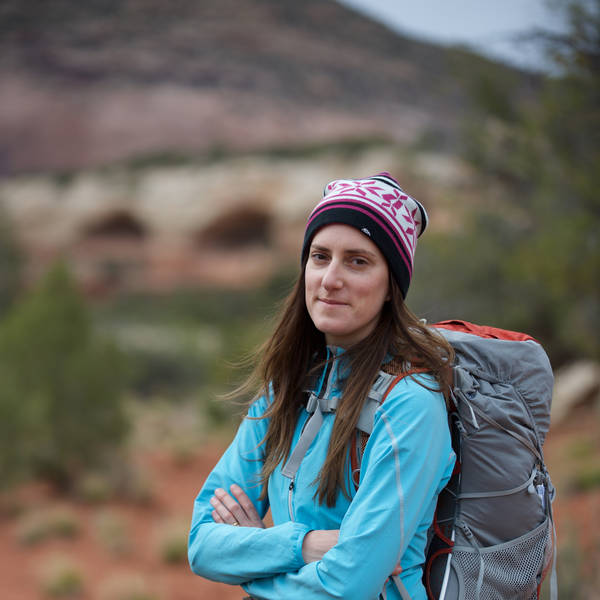 Kate Siber Contributor
Kate Siber ContributorKate Siber, a freelance writer and correspondent for Outside magazine, is based in Durango, Colorado. Her writing has appeared in National Geographic Traveler and The New York Times. She is also the author of “National Parks of the U.S.A.,” a best-selling children’s book.
